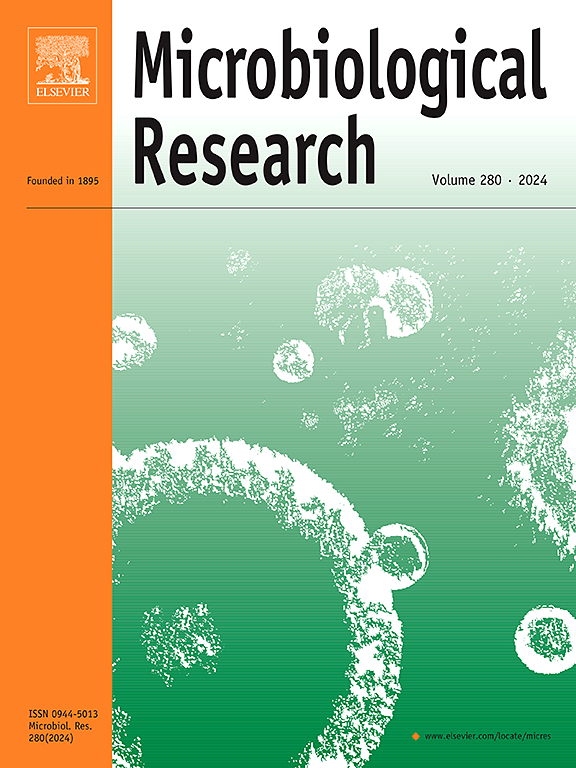中草药残基有机改良剂通过丰富关键微生物,增强土壤生态系统的多功能性
IF 6.1
1区 生物学
Q1 MICROBIOLOGY
引用次数: 0
摘要
生态系统多功能性(EMF)是反映土壤健康的关键指标,已被证明受到有机修正的积极影响。中草药残基具有丰富的生物活性物质和较低的生态风险,是一种很有前景的有机改性材料。因此,我们通过不施肥(CK)、化肥(CF)、单施cr -OA (OA)和部分用cr -OA替代化肥(OA-CF) 4种处理的温室试验,探讨cr -OA对EMF的调控机制。利用植物生长、病原菌抑制、土壤理化性质和微生物多样性等19个生态系统功能来计算EMF。结果表明,添加hr -OA后,上述生态系统功能大部分得到改善,其中OA- cf的EMF最高,OA次之。此外,Lysobacter作为一个关键属被富集。进一步分析发现,溶菌通过影响细菌Simpson指数、株高和根长来驱动EMF,这一结论在温室验证实验中得到了证实。通过本研究,我们更清楚地了解了hr - oa所提供的突出生态系统功能和EMF的调节机制。本文章由计算机程序翻译,如有差异,请以英文原文为准。
Organic amendments derived from Chinese herb residues enhance soil ecosystem multifunctionality by enriching key microorganisms
Ecosystem multifunctionality (EMF), a key metric reflecting soil health, has been proven to be positively influenced by organic amendments. Chinese herb residues (CHR), rich in bioactive compounds and with lower ecological risks, are regarded as a promising source for organic amendments. Therefore, we conducted a greenhouse experiment with four treatments: no fertilizer (CK), chemical fertilizer (CF), single application of CHR-OA (OA), and partially replacing chemical fertilizers with CHR-OA (OA-CF), aiming to explore the regulatory mechanism of CHR-OA addition to EMF. A total of 19 ecosystem functions, covering plant growth, pathogen suppression, soil physicochemical properties, and microbial diversity, were used to calculate EMF. The results showed that most of the above ecosystem functions were improved by adding CHR-OA, with the OA-CF possessing the highest EMF, followed by OA. Additionally, Lysobacter was enriched as a key genus. Further analysis revealed that Lysobacter drove EMF by influencing bacterial Simpson index, plant height, and root length, and this conclusion was confirmed in greenhouse verification experiments. Through this study, we have gained a clearer understanding of the prominent ecosystem functions provided by CHR-OA and the regulatory mechanism of EMF.
求助全文
通过发布文献求助,成功后即可免费获取论文全文。
去求助
来源期刊

Microbiological research
生物-微生物学
CiteScore
10.90
自引率
6.00%
发文量
249
审稿时长
29 days
期刊介绍:
Microbiological Research is devoted to publishing reports on prokaryotic and eukaryotic microorganisms such as yeasts, fungi, bacteria, archaea, and protozoa. Research on interactions between pathogenic microorganisms and their environment or hosts are also covered.
 求助内容:
求助内容: 应助结果提醒方式:
应助结果提醒方式:


